|
John Tyman's Cultures in Context Series Torembi and the Sepik A Study of Village Life in New Guinea |
|
Topic No. 7: Shifting Cultivation |
|
John Tyman's Cultures in Context Series Torembi and the Sepik A Study of Village Life in New Guinea |
|
Topic No. 7: Shifting Cultivation |
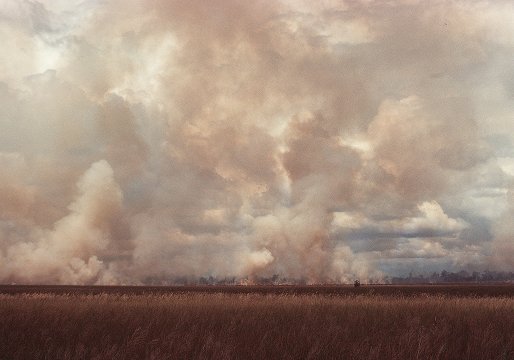 |
| 090. The trash is piled up and left to dry for a few weeks, before it is burnt. In this case the fire spread to grassland. |
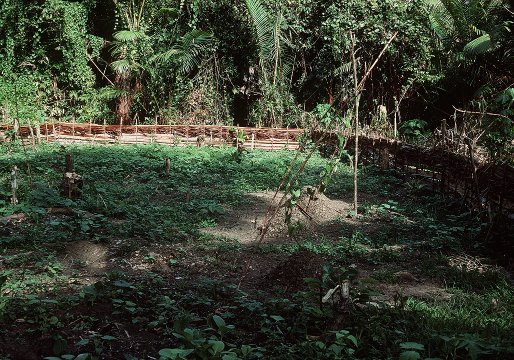 |
| 093. There is, however, little point in planting anything till the garden has been fenced. Pigs, both wild and domestic, are a menace and will tear apart any unfenced garden in their search for food. |
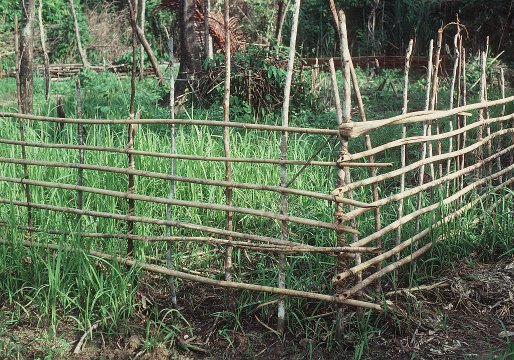 |
| 094. People here sometimes improvise and simply pile up the branches that remain after the fire, but they usually build fences from smaller pieces of wood, bound together by strips of cane. |
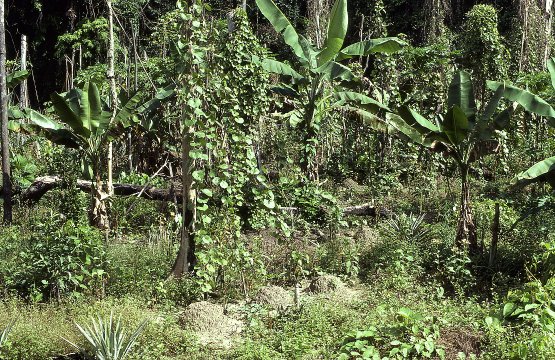 |
| 096. The common ones here are bananas, paw paws, pineapples, sugar cane, corn, onions, cabbages, green beans, peanuts, taro, tobacco, water melons, cucumbers, sweet potatoes and, of course, yams. |
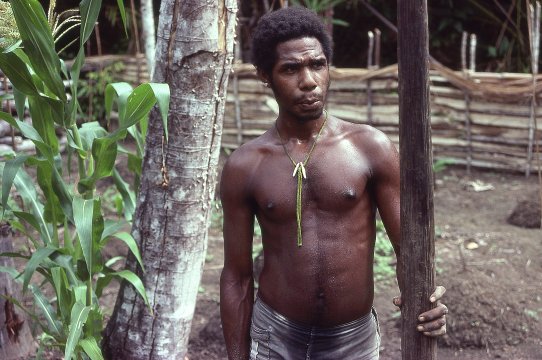 |
| 097. Everything is done by hand, using the simplest of tools, most of them home-made. For example, instead of a fork, they use a wooden digging stick pointed at one end. |
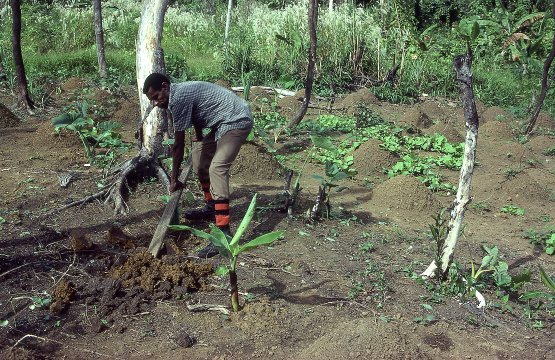 |
| 098. Men help with the heavy work, including the digging of newly cleared land, and the planting of yams. They also help with the yam harvest. |
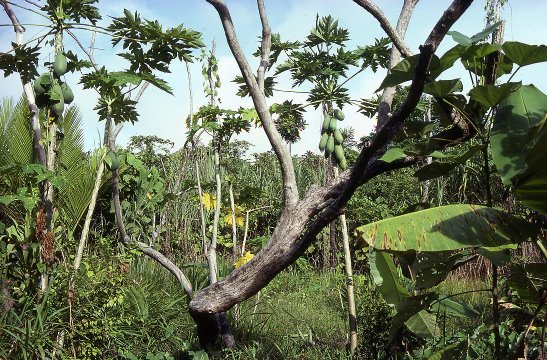 |
| 099. Women plant the other crops and also do all the weeding … which is a big job in a hot wet climate. |
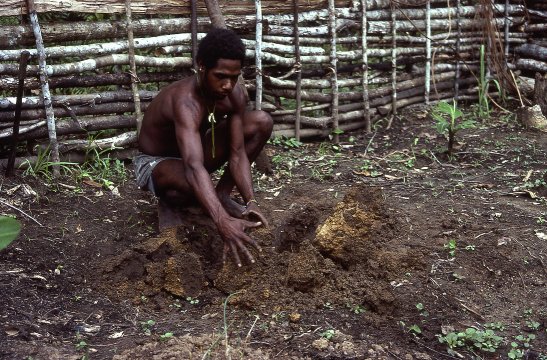 |
| 101. After the soil has been loosened, men heap up lumps of earth to form a small mound. These concentrate plant nutrients and improve soil drainage. |
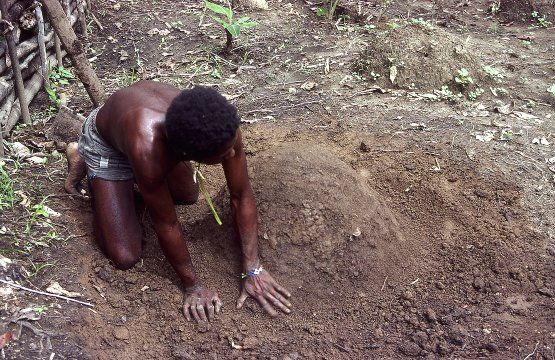 |
| 102. Seed yams saved from last years’ crop are placed on top, a hoe is used to rake up the soil, and the mounds are smoothed off by hand. |
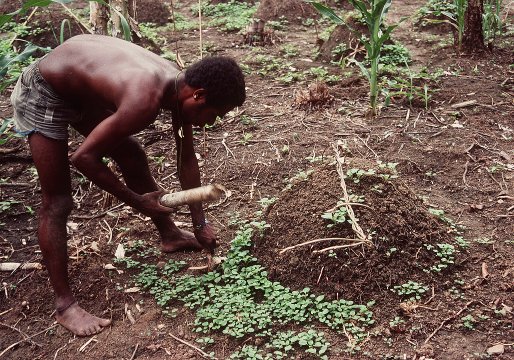 |
| 103. Later they’ll knock pegs into the ground beside each mound, to support the yam vines, using lines of split cane to connect each peg to a post nearby, or to one of the remaining tree trunks. |
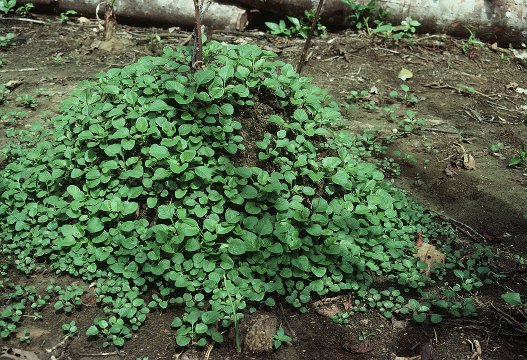 |
| 104. Greens, meanwhile, are planted on the mounds … to make the most of the space available. |
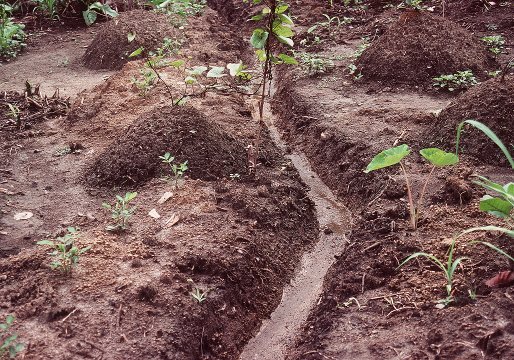 |
| 106. Since the land is almost level, erosion is not a problem here, as it is in the highlands; but by the end of the year the soil will nevertheless be worn out. |
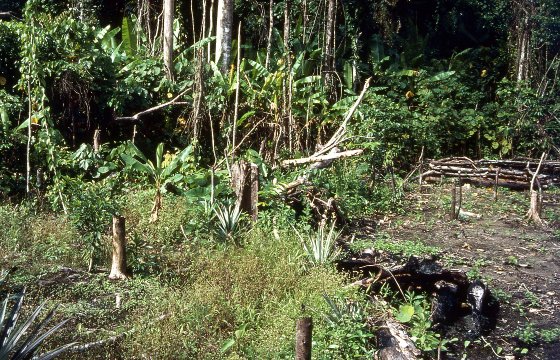 |
| 107. Weeds are another problem. In this picture you can compare a garden on the left planted nine months ago, with an area on the right cleared just recently. |
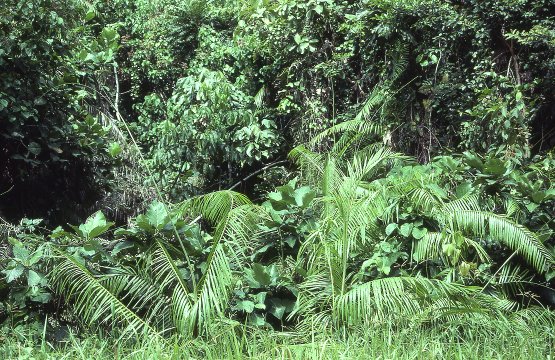 |
| 108. This area was used 12 years ago. Eventually, as you can see, the bush takes over once more and the land rests until it is again cleared for cultivation … in maybe 15 or 20 years. |
![]()

![]()
Back to
Cultures in Context Intro: Photos & Recordings
![]()
Text, photos and recordings
by John Tyman
Intended for Educational Use
Only.
Copyright Pitt Rivers Museum,
Oxford University, 2010.
Contact Dr.
John Tyman for more information regarding licensing.
![]()
www.hillmanweb.com
Photo processing, Web page layout,
formatting, and complementary research by
William Hillman ~ Brandon, Manitoba
~ Canada